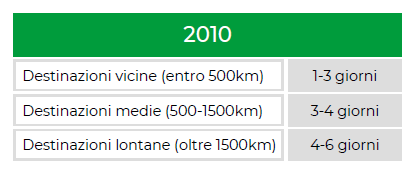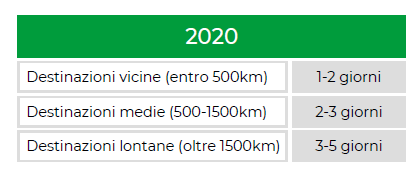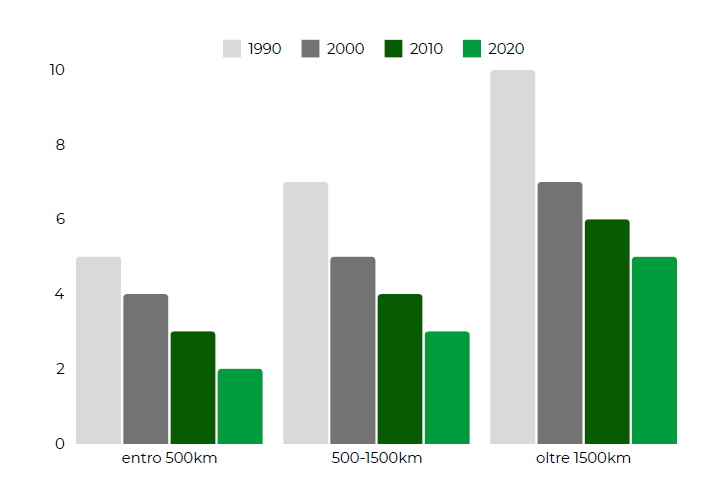
European Transportation Revolution
Customer-centric innovation
Unbound speed
Imagine wanting to ship your goods on a Monday morning and knowing they could be on their way by the end of the day. This is the speed that networks can offer. A service that not only speeds up deliveries but also transforms the very concept of delivery times. With networks, it's no longer about waiting days or weeks to see your goods moving. It's a radical change, where responsiveness becomes the norm and every minute counts.
In a world where time is money, delivery speed can make the difference in a customer's choice of supplier. Networks, with their extensive network and logistical efficiency, are able to drastically reduce delivery times, offering a fast and reliable service. Imagine the impact this speed can have on your daily operations: orders are fulfilled faster, customers are more satisfied, and your business can respond promptly to market needs.
But speed isn't the only advantage. Networks are also incredibly flexible and able to adapt to the ever-changing needs of the market. Whether you need to ship a single pallet or an entire truckload, networks can handle it with ease and efficiency. This flexibility means you are not tied to rigid logistics solutions. You can quickly adapt to new business opportunities, respond to demand fluctuations, and efficiently manage any operational changes.
Beyond service: an experience
Networks go beyond speed to empower logistics operators to provide customers with a complete experience, from cargo management to real-time tracking. Every shipment is a journey, and with networks, you're always in command.
What does this mean exactly? It means that the logistics operator gives you complete control over your shipment. You can track your goods, know exactly where they are and when they will arrive at their destination. This level of transparency is essential for maintaining customer confidence and improving operational planning. You can also manage cargo efficiently, ensuring that each pallet is used to its maximum capacity. This not only reduces costs but also increases overall transportation efficiency.
In addition, real-time tracking allows you to be proactive rather than reactive. If there are delays or problems, you will know about them immediately and can take the necessary steps to mitigate any impact. This proactive approach is a significant competitive advantage in an increasingly demanding market.
Choosing the right logistics partner is a strategic investment in a company's long-term success, a partner capable of creating a pan-European network with volumes that allow for multiple weekly departures. With networks, it's not just about shipping goods, it's about managing a distribution network that evolves with you, responding to specific needs and helping you grow.
This integrated experience means that you not only get a transportation service, but a logistics partner that works alongside you to optimize every aspect of your supply chain.
What does this mean exactly? It means that the logistics operator gives you complete control over your shipment. You can track your goods, know exactly where they are and when they will arrive at their destination. This level of transparency is essential for maintaining customer confidence and improving operational planning. You can also manage cargo efficiently, ensuring that each pallet is used to its maximum capacity. This not only reduces costs but also increases overall transportation efficiency.
In addition, real-time tracking allows you to be proactive rather than reactive. If there are delays or problems, you will know about them immediately and can take the necessary steps to mitigate any impact. This proactive approach is a significant competitive advantage in an increasingly demanding market.
Choosing the right logistics partner is a strategic investment in a company's long-term success, a partner capable of creating a pan-European network with volumes that allow for multiple weekly departures. With networks, it's not just about shipping goods, it's about managing a distribution network that evolves with you, responding to specific needs and helping you grow.
From the 1980s to Today: A Journey into European Logistics
In the 1980s and 1990s, transport operations in Europe were characterized by complex and manual processes. Orders were handled by fax or even physically collected by agents. Departures in most cases took place only twice a week, in some cases only on Fridays. Shipment management was entrusted to local correspondents who took care of distribution in their respective areas. This system, although functional, required a considerable expenditure of time and resources and lengthened delivery times.

A significant turning point came with the beginning of the 2000s. The introduction of networks allowed for the centralization of shipments, bringing goods from entire nations to a single point for efficient distribution throughout the territory. This innovation simplified logistics, reducing delivery times and allowing for the management of smaller batches, improving flexibility and responsiveness to market needs by shortening lead times. In addition, the advent of email and the internet has made order receipt more efficient and less prone to errors.

The Rise of Networks and the New Supply Chain Dynamics
The 2010s saw a further evolution with the influence of giants like Amazon. Customer expectations have changed: more frequent deliveries and more agile inventory management are now required. As a result, the role of warehouses has been scaled back, with a growing demand for almost daily pick-ups. This has led to greater specialization of carriers and the widespread adoption of networks also in Europe, inspired by the English experience of the 1980s (founders of the first pallet network Palletline).

In the 2020s, after the pandemic, many European industries reassessed their logistics and supply chain strategies. One of the emerging phenomena has been reshoring, or the return of production to countries of origin or closer to consumer markets, after years of offshoring to countries with lower labor costs. This change was driven by the need to reduce risks associated with global supply chains and improve operational resilience. At the same time, companies have faced a reduction in warehouse space. These two trends have led to a growing need to ship goods every day, allowing stock accumulation to be reduced and warehouse space to be better utilized.
Networks have begun to create hubs that bring together micro zones, optimizing night hauls to ensure efficient distribution. However, this has led to a major difficulty as the need for many more drivers has arisen. This period has seen an increase in the pressure to reduce costs and improve efficiency. Companies have faced increasingly complex challenges, seeking innovative solutions to maintain their competitiveness in an increasingly demanding market.

Today, there is an extreme need for information, with customers needing to monitor the progress of individual shipments. As a result, real-time shipment tracking has become essential, with customers increasingly demanding visibility and transparency into their deliveries.

Transform your supply chain for the future
Transform your distribution network with logistics partners capable of meeting today's and tomorrow's needs. Adaptability and efficiency are the keys to excellence, and choosing the right logistics operator is the difference between falling behind and progressing successfully.
Rely on a distribution system that not only meets current needs, but that grows with you. Invest in a prosperous future with high-quality, flexible and competent logistics solutions to gain a competitive edge.